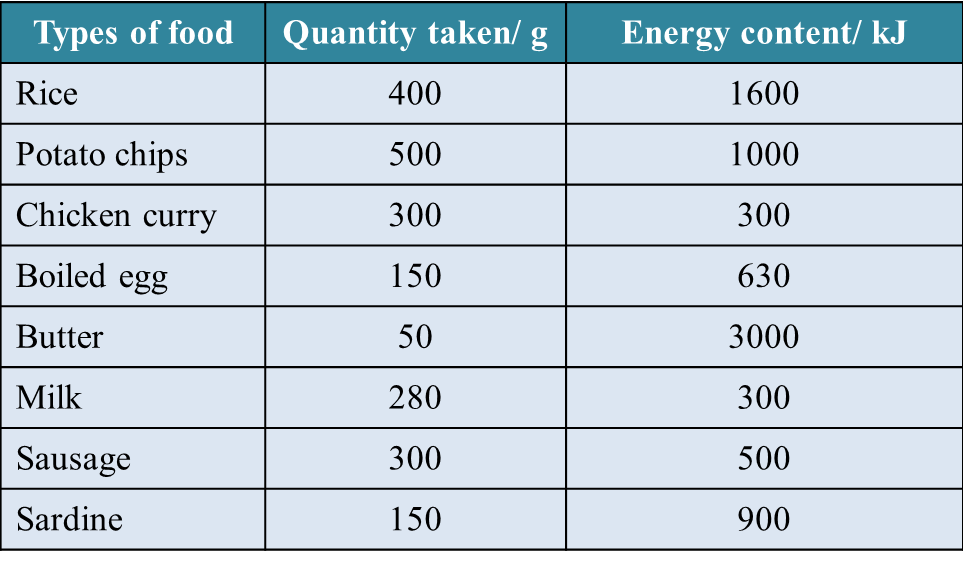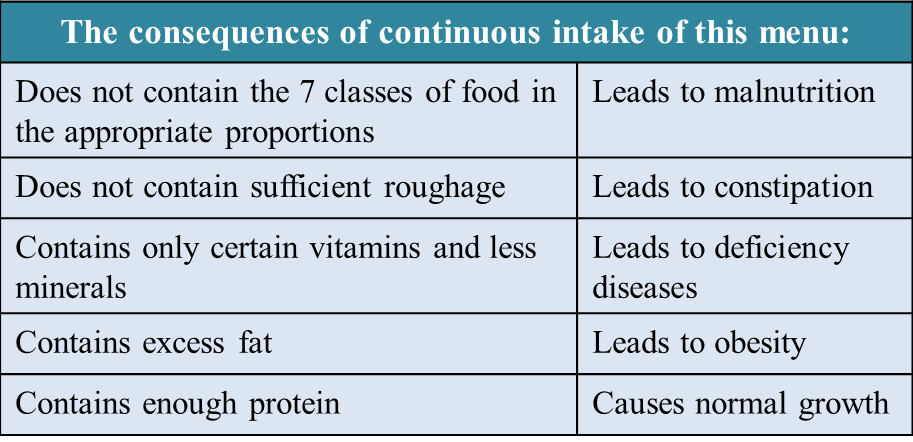Question 1:
(a)(i) After absorption of nutrients in the small intestine, the undigested substances in the colon result in the formation of faeces.
Explain the formation of faeces in a human. [4 marks]
(ii) Malnutrition is a condition due to taking an unbalanced diet in which certain nutrients are lacking, in excess or in the wrong proportions.
Explain the effect on a child who is given insufficient amounts of any two nutrients of food for a long period of time. [6 marks]
(b) Table below shows the food intake by a boy aged 15 years in his daily menu. The daily energy requirement for him is 12500 kJ.
Answer:
(ii)
(b)(ii)
(a)(i) After absorption of nutrients in the small intestine, the undigested substances in the colon result in the formation of faeces.
Explain the formation of faeces in a human. [4 marks]
(ii) Malnutrition is a condition due to taking an unbalanced diet in which certain nutrients are lacking, in excess or in the wrong proportions.
Explain the effect on a child who is given insufficient amounts of any two nutrients of food for a long period of time. [6 marks]
(b) Table below shows the food intake by a boy aged 15 years in his daily menu. The daily energy requirement for him is 12500 kJ.

(i) Based on the Table, state the value of energy contained in this daily food intake.
Does the food intake satisfy his daily energy requirement? [2 marks]
(ii) This boy takes this menu continuously for a long time. [8 marks]
Answer:
(a)(i)
- The contents in the small intestine that are not absorbed enter the colon.
- The intestinal content consists of a mixture of water, indigestible food, bacteria, dead cells and pigments.
- The contents move slowly along the colon by peristalsis.
- Water is reabsorbed and faeces are formed.
(ii)
- A child who is deficient in protein may suffer from kwashiorkor.
- Protein is needed for normal growth. Lack of protein causes growth of the child to be stunted.
- A child who is deficient in vitamin C may suffer from scurvy.
- Vitamin C is needed for healthy gums and skin. Lack of vitamin C causes swollen and bleeding gums.
- A child who is deficient in roughage may suffer from constipation.
- Roughage is needed to stimulate peristalsis.
- Lack of roughage causes difficulty in defaecation.
(b)(i)
Total energy = 8230 kJ
The energy produced from the food taken daily is insufficient.
(b)(ii)
